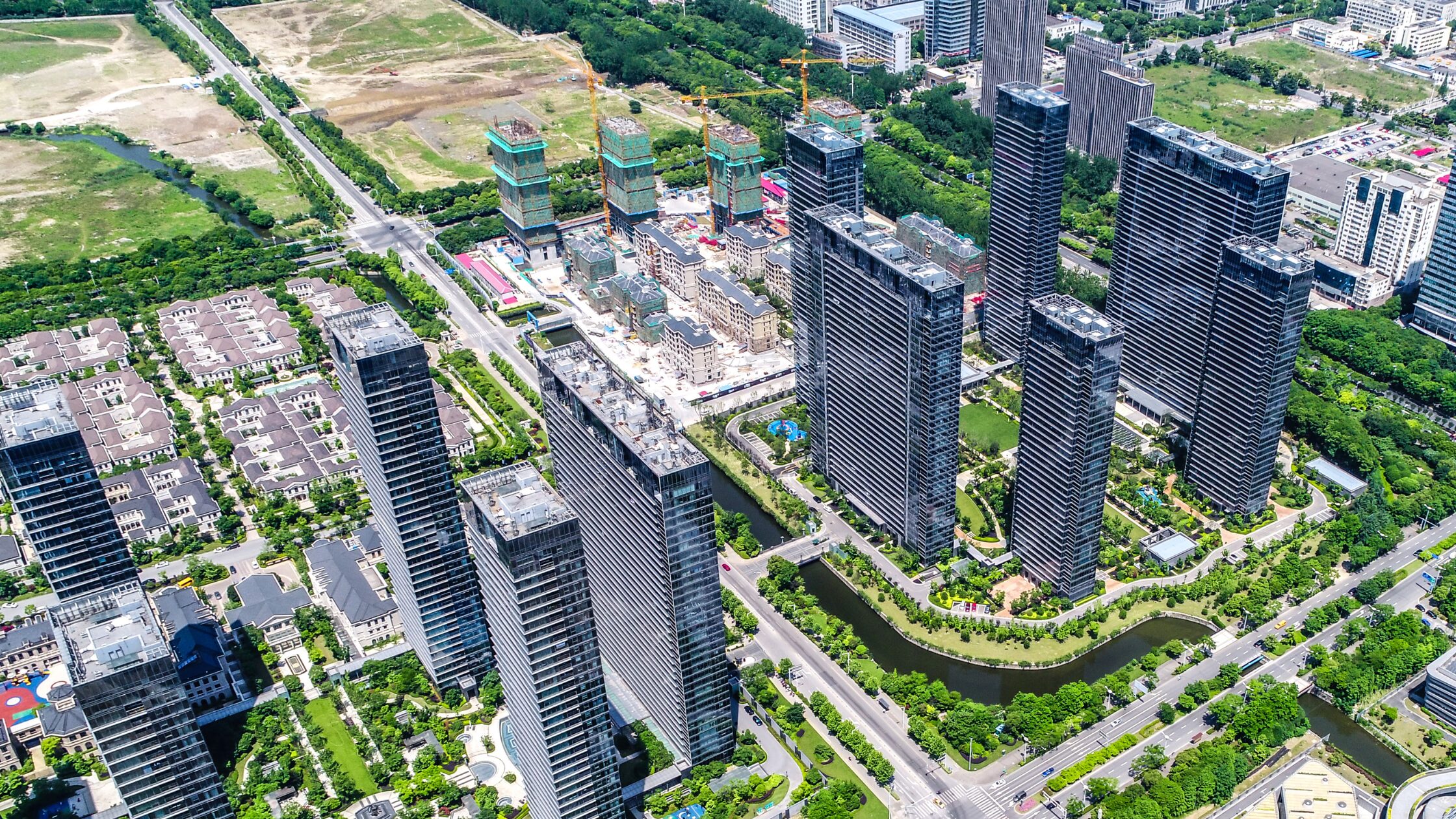You’ll encounter leasehold interests in two very different ways as a CRE investor: If you own the land, you can grant a tenant the right to use a completed space for a fixed term.
You can also enter into a ground lease, where you lease land from a separate owner so you can control the site and run the development without buying the land outright.
How does each leasehold arrangement define control?
In both cases, a leasehold interest defines who controls the property, for how long, and under what conditions:
1. Standard commercial lease
This is the simplest form of a leasehold interest: you rent the space to a tenant, and the lease grants them the right to occupy it for the agreed-upon term.
Permitted uses, rent, escalation rules, renewal options, and restrictions appear in the contract.
2. Ground lease (leasing land for development)
In a ground lease, you lease the land instead of buying it —you control the site and develop it for the length of the lease, but the landowner keeps the title.
This structure gives you long-term control without the upfront cost of purchasing the land.
Under a typical ground lease:
- You pay rent to the landowner for a fixed number of years.
- You handle financing and construction, and you own the improvements during the lease term.
- You can generate revenue by subleasing the finished building or individual units.
- You cover operating expenses such as taxes, insurance, and maintenance because you control the site.
Your ownership lasts only as long as the lease — when the lease ends, the building and all improvements typically revert to the landowner unless the contract states otherwise.
What leasehold types apply in a standard commercial lease?
When you lease a completed commercial property to a tenant, the agreement falls into one of four leasehold types:
If you’re planning to buy a tenant-occupied building, knowing the leasehold structure of existing tenants is essential because it influences the property’s risk and expected returns.
For instance, a building with several tenants on tenancy-at-will agreements may face greater income uncertainty, as any of those tenants could leave with relatively short notice.
This uncertainty can affect the underwriting and valuation, as well as your ability to plan for the long term.
What leasehold types apply in a standard commercial lease?
When you lease a completed commercial property to a tenant, the agreement falls into one of four leasehold types:
If you’re planning to buy a tenant-occupied building, knowing the leasehold structure of existing tenants is essential because it influences the property’s risk and expected returns.
For instance, a building with several tenants on tenancy-at-will agreements may face greater income uncertainty, as any of those tenants could leave with relatively short notice.
This uncertainty can affect the underwriting and valuation, as well as your ability to plan for the long term.
What commercial projects commonly use ground lease structures?
Some commercial uses rely on ground leases because the landowner wants to keep long-term control of the property while still enabling private development.
As a developer or operator, you can secure access to prime sites you wouldn’t be able to buy outright.
You can then build on them and run income-generating projects for the duration of the lease.
- Airports and transit hubs – Authorities keep ownership of critical land, but long-term leases let you build hotels, rental facilities, logistics space, or retail.
- Universities and healthcare campuses – You can develop student housing, medical offices, or research buildings on prime sites that educational institutions usually won’t sell.
- Retail pad sites – Some owners of shopping centers lease outpad sites instead of selling them. You finance and run the freestanding building while they keep the land.
- Government or municipal land – Many cities rent our public land to CRE developers. You may be able to develop civic-adjacent assets while the government holds on to the title.
In all of these cases, the structure gives you high-value control for a long term while the landowner retains long-term ownership.
Are there drawbacks to leasehold interests?
Drawbacks in a standard commercial lease
Once the lease is signed, you’re tied to the terms.
Your ability to respond to changing market conditions depends entirely on what that agreement allows and on how well the tenant performs within it.
If the lease term is too short or if you’re operating under month-to-month or at-will agreements, you can’t count on steady cash flow.
That makes it harder to project returns or secure financing.
If a tenant overstays after their lease expires and refuses to leave, you may lose time, miss out on new rental income, and face legal costs to resolve the situation.
You might be locked into under-market rent or restricted from reconfiguring the space when needed if the lease contract doesn’t include clear escalation clauses, usage provisions, or renewal triggers.
Drawbacks of a ground lease
When you lease land through a ground lease, you may control the building, but you don’t control the land.
Since you can’t pledge the land as collateral, lenders look to the improvements and the lease itself.
Many will only move forward if the landowner agrees to subordinate their claim.
If the project runs into trouble, the lender has first rights to recover, which means the landowner could lose control of the property — and recover nothing.
Over time, shared control becomes the harder problem. Most ground leases run 50 years or longer.
During that span, markets change, tenants come and go, and buildings inevitably need capital upgrades or full repositioning.
But you can’t move unilaterally. If the landowner disagrees with your plans or takes too long to decide, you risk missing critical windows.
Even when the lease spells out baseline requirements, any change outside those terms can drag into drawn-out negotiations.
How do lenders underwrite ground leasehold deals?
Financing a leasehold structure pushes lenders to scrutinize everything about the lease itself, from its duration to the financial obligations and permitted rights, all because you don’t own the underlying land.
Is a freehold better than a leasehold interest?
Freehold gives you full ownership of the land and property, so you are free to refinance, redevelop, or sell without needing approval from a separate landowner.
This usually makes freeholds more attractive for long-term holds or repositioning plays.
But leasehold still makes sense in the right context.
If you’re targeting a high-value location you can’t afford to buy outright — or one that’s simply not for sale — a ground lease gives you a way in.
You can control the project and operate the asset for decades, often with lower upfront capital.
So it’s not a question of one being better across the board. It’s about how long you plan to hold the asset and whether the deal still pencils out with the limitations that come with leasehold.
At Private Capital Investors, we structure financing for both freehold and leasehold acquisitions and can help you understand where the risks sit.
If you’re evaluating a deal or need input on a complex leasehold structure, call 972-865-6206.





